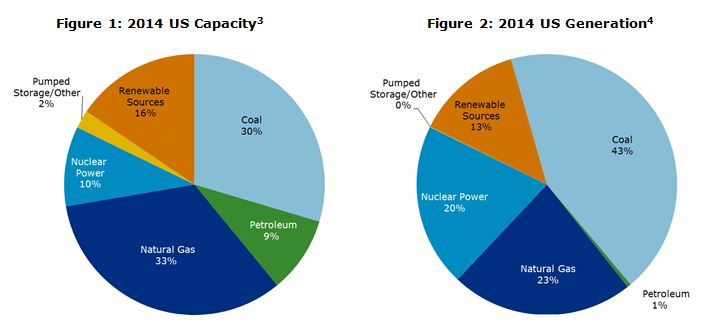Utilities, much like the states they operate in, have a variety of opinions about Section 111(d) of the Clean Air Act, often based on their generation portfolio and historical experience with clean energy initiatives. Not surprisingly, many utilities’ opinions often mirror those of the states where they operate and reflect how their businesses might be affected by the Clean Power Plan. (Editor’s Note: The Clean Power Plan, or CPP, was released by EPA on June 2, 2014. It allows states to meet state-specific goals through a mix of strategies, including energy efficiency and renewable energy.)

In 2014, the electric power sector was the number one contributor to CO2 emissions in the US, accounting for 28% of total emissions. The majority of these emissions come from combusting coal. (Source: DNV GL blog)
In their latest blog post, US Clean Power Plan and Electric Utilities, DNV GL’s 111(d) team explores this issue further by comparing 2012 emissions to the proposed emission limits to learn what might happen when the regulation is implemented. They conclude that, while the consequences of and opinions about the proposed regulation vary, legislators, regulators, and utilities will need to work together to create a strategy that best fits the needs of their state.
DNV GL can help formulate a tailored plan to respond to this proposed regulation by utilizing their experience developing long-term strategies for sustainability, renewable integration and market design, and thorough their understanding of the unique concerns facing each market.
View DNV GL’s full calendar of events here.
DNV GL
www.dnvgl.com/energy
Filed Under: News




